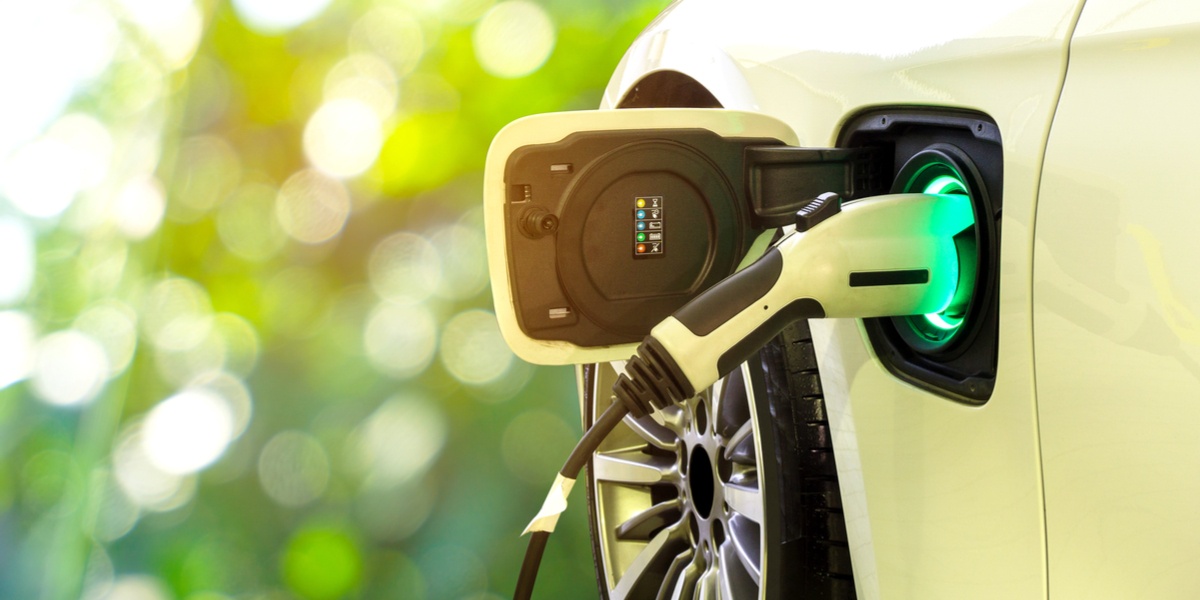Electric Vehicle Charging Stations

Electric vehicles are gaining a larger share of the automotive market, while becoming more affordable. Environmental awareness has become a key driving force in EV adoption among consumers, and businesses are realizing they can attract these drivers by offering EV charging stations. Some government programs such as the California Zero Emission Vehicle (ZEV) rule are requiring automakers to offer more environmentally friendly vehicles.
The emissions reduction potential of EVs is significant because they can run with electricity generated by wind turbines or solar panels. Even if an EV relies on a power grid where most electricity comes from fossil fuels, there is a reduction of emissions: power plants use fossil fuels much more efficiently than the combustion engines on cars.
Electric Vehicles and Charging Time
Plug-in electric vehicles (PEVs) obtain most or all of their power from electricity supplied by the power grid. Plug-in hybrid electric vehicles (PHEVs) offer 3-4 miles per kWh of charge, as a rule of thumb, although this may vary depending on driving habits. There are two main factors that influence battery charging time:
- Battery capacity, typically measured in kilowatt-hours (kWh). It typically ranges from 4 to 90 kWh, depending on the type of vehicle.
- Charging station features: capacity and limit charging speed.
The rate at which the car can accept charge is measured in kilowatts (kW). Each vehicle has its own maximum rate based on its internal charging capacity, and may or may not have a separate DC charging port.
Planning to add EV charging infrastructure to your building?
Electric Vehicle Charging Stations
EV charging stations can be classified into three types, based on their charging method:
- Level 1 charging
- Level 2 charging
- DC fast-charging
Level 1 charging uses the standard 120 V AC power supply and offers 2 to 5 miles of range per hour (RPH). Depending on the car and battery specifications, it takes 8-20 hours to add 40 miles of range. Level 1 charging typically uses a three-pronged NEMA 5-15 standard household plug.
Level 2 charging uses a residential or commercial 208-240V power supply and the vehicle’s onboard charger, offering 10 to 30 miles of range per hour. Level 2 charging is characterized by protecting the user from electrified components: commercial units are hard-wired and free from exposed power outlets, only establishing an electric current once connected to the vehicle. These stations can be installed as a stand-alone system or in a network configuration.
DC fast charging was previously called level 3 charging, requiring 208-480V three-phase power. The charger converts the power input to DC and supplies it directly to the battery. DC fast charging offers up to 100-200 miles of range per hour, and takes 15 to 45 minutes to charge from 0 to 80 percent, depending on the vehicle.
The following table summarizes some typical applications of each charging method:
|
CHARGING TYPE |
APPLICATIONS |
|
Level 1 Charging Level 2 Charging DC Fast Charging (Level 3)
|
Only several narrow uses Parking spots with charging stations. Residential, commercial and public charging. Commercial, public locations. Charging during long distance travel. |
|
Level 2 Charging |
Parking spots with charging station Residential, commercial and public charging |
|
DC Fast Charging (Level 3) |
Commercial, public Charging during long-distance travel. |
Level 2 charging works best where parking times are longer than an hour, which includes overnight charging at homes or hotels, workplace charging or fleet charging. Level 2 charging is also feasible during dining, sports, recreation and shopping.
DC fast charging best serves businesses and locations where the average parking time of the customer is less than one hour. It can be used to complement Level 2 charging. However, take note of the consequences when using the wrong type of charger: a LV2 charger offers a bad user experience for a short parking time, and using DC fast chargers where the vehicles will stay parked for long represents a waste of resources.
Codes and Regulations
In New York City, the following provisions apply for electric vehicle charging in garages and parking lots:
- Conduit and solar panel capacity for up to 20% of newly created parking stalls. This applies for garages and parking lots.
- Attachment plugs, EV connectors and inlets must be labeled for their intended purpose.
- EV supply equipment must be provided with an interlock.
- Overcurrent protection for feeders and branch circuit supplying EVs shall have a rating of at least 125% of maximum load.
- The EV supply equipment shall be located to permit direct connection to the vehicle itself.
Conclusion
AC Level 1 and 2 charging provide AC power to the vehicle, where the vehicle’s onboard charger converts AC to DC power needed to charge the batteries. Planning, including site assessment and selection considerations, and assessing electrical needs and availability, is critical for functional, aesthetically pleasing and cost effective installations that can meet present and future needs.

Ankit Javeri
Ankit is the Project Manager at NY Engineers, who holds an M.Tech. Some of his projects includes Community Access, Jackson Avenue
Join 15,000+ Fellow Architects and Contractors
Get expert engineering tips straight to your inbox. Subscribe to the NY Engineers Blog below.


